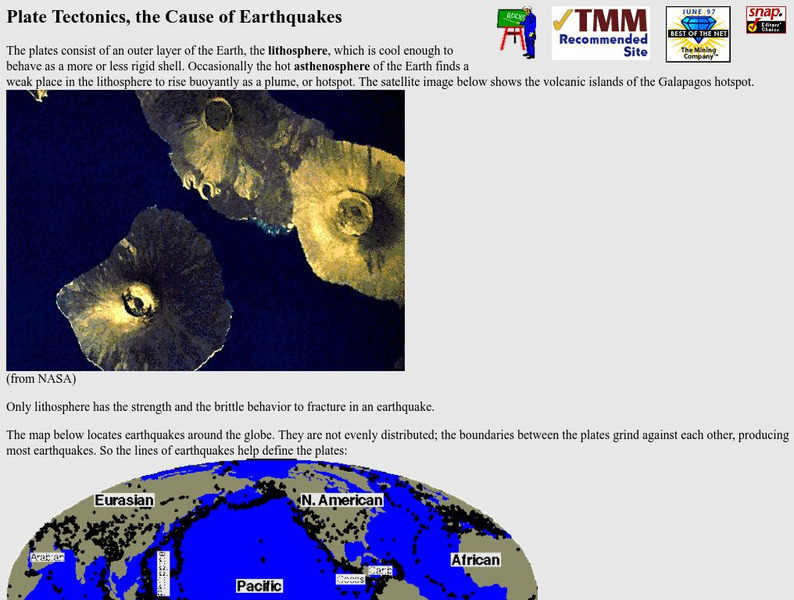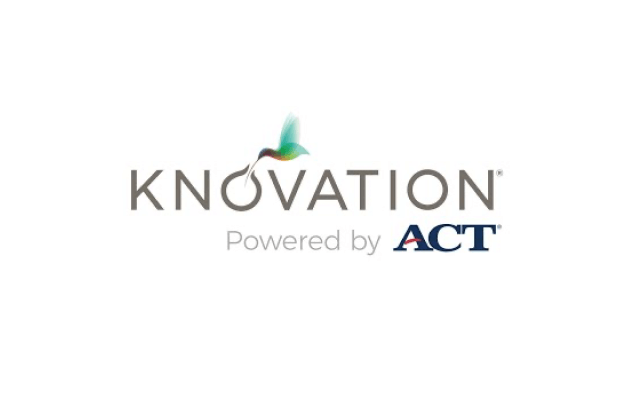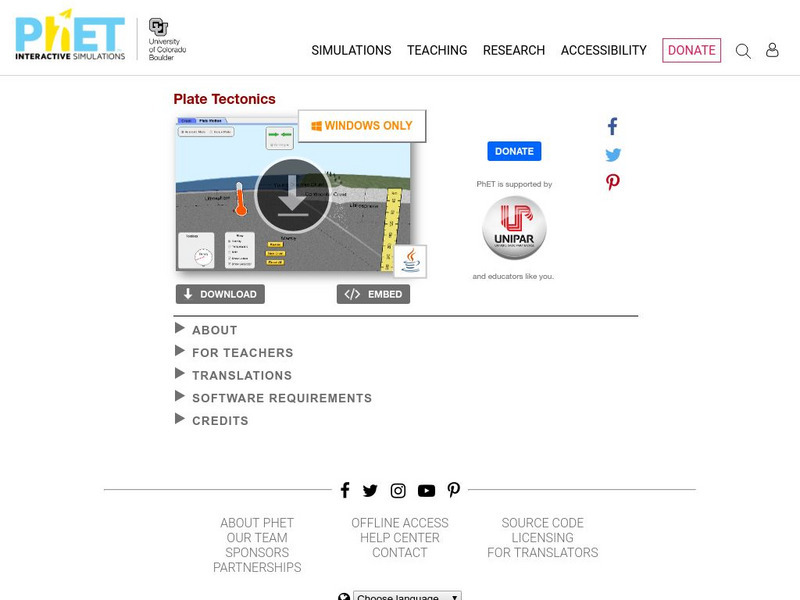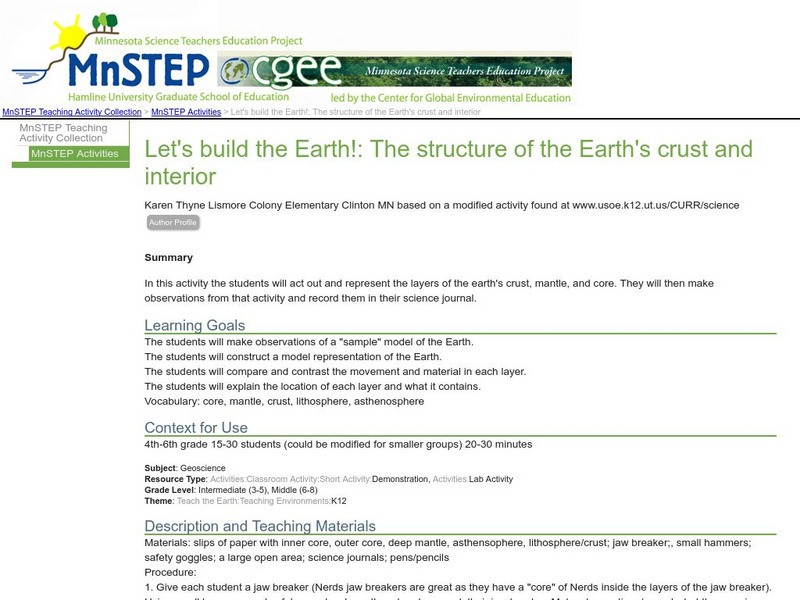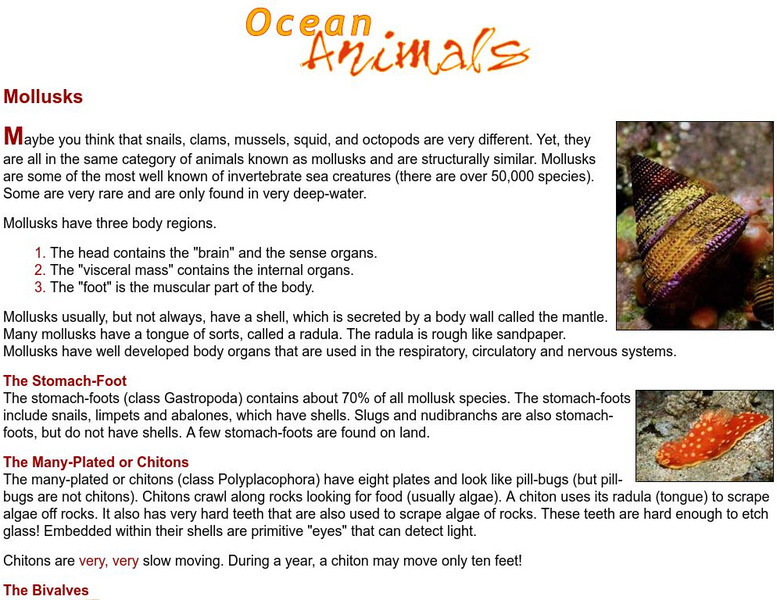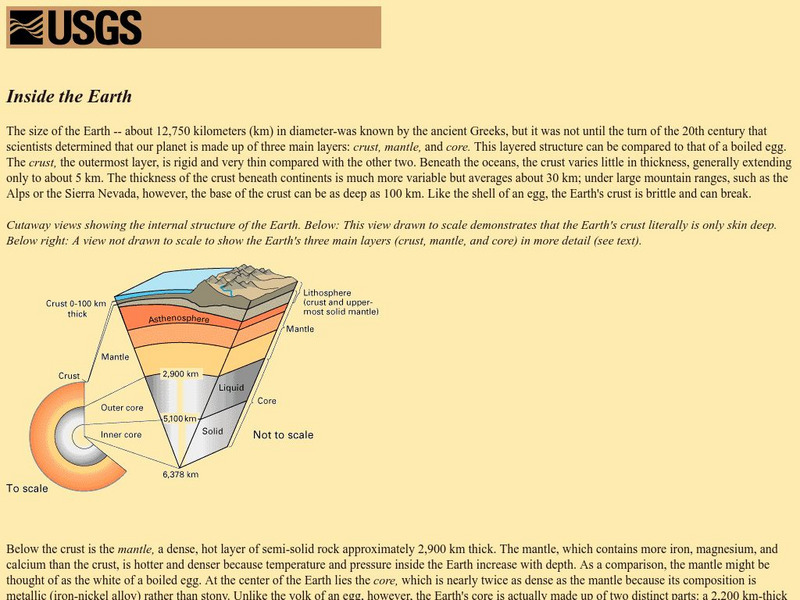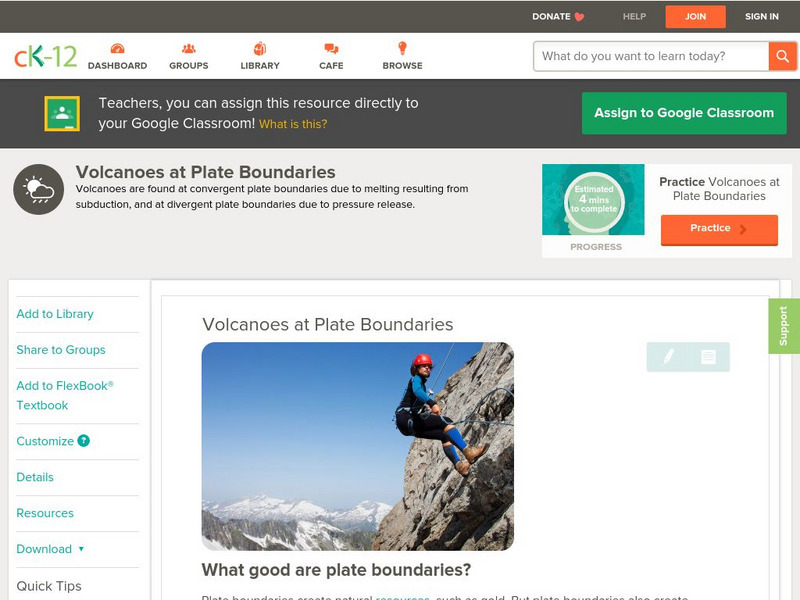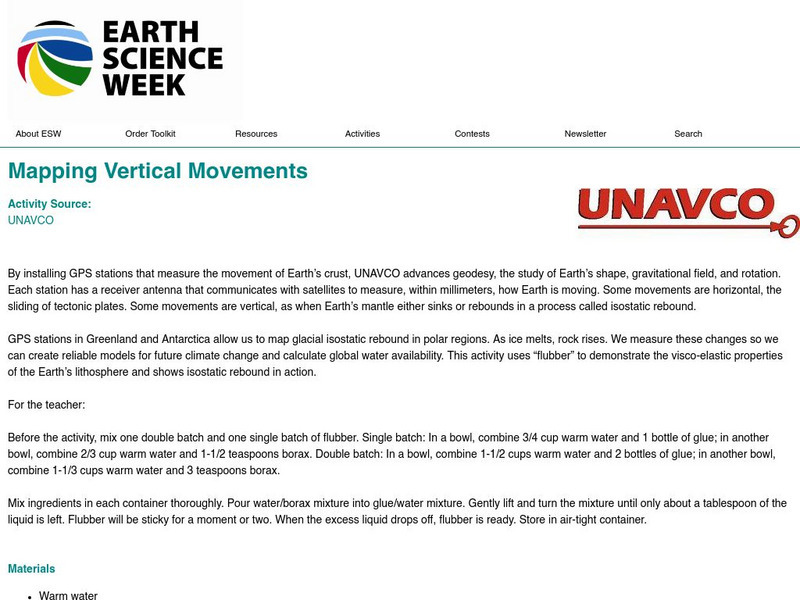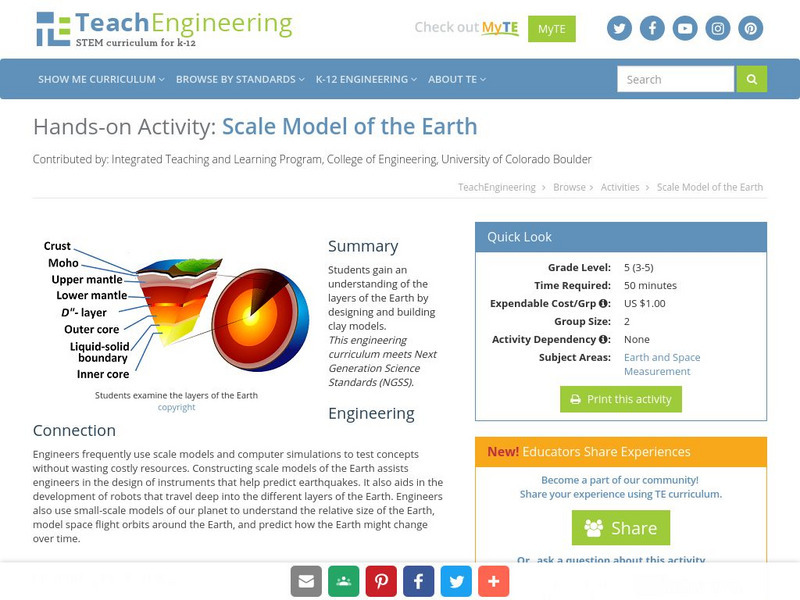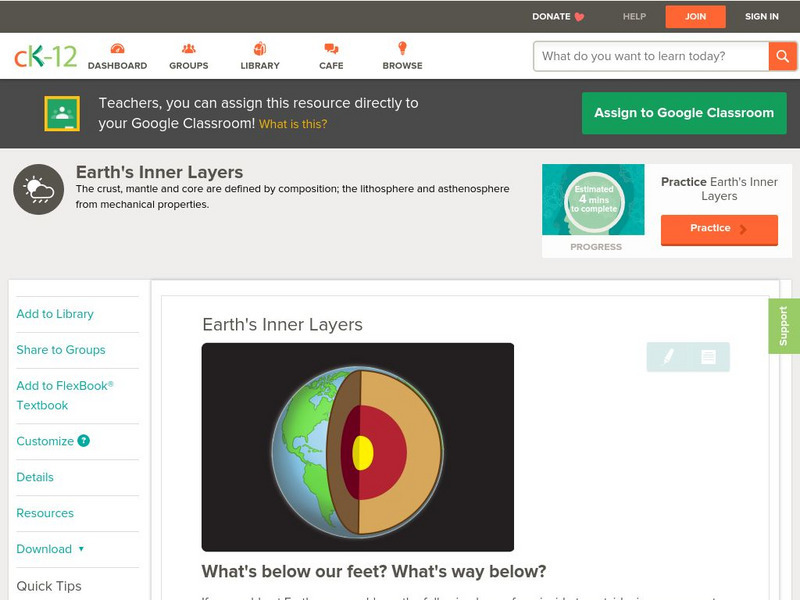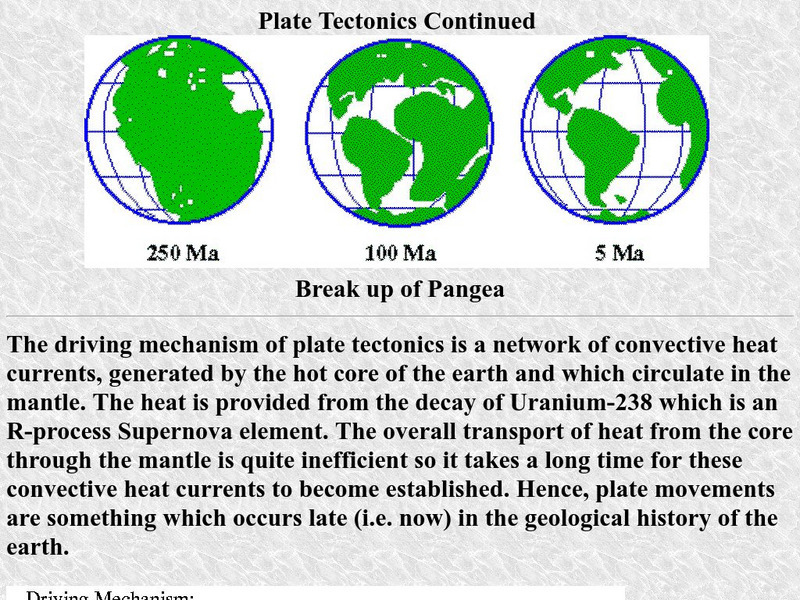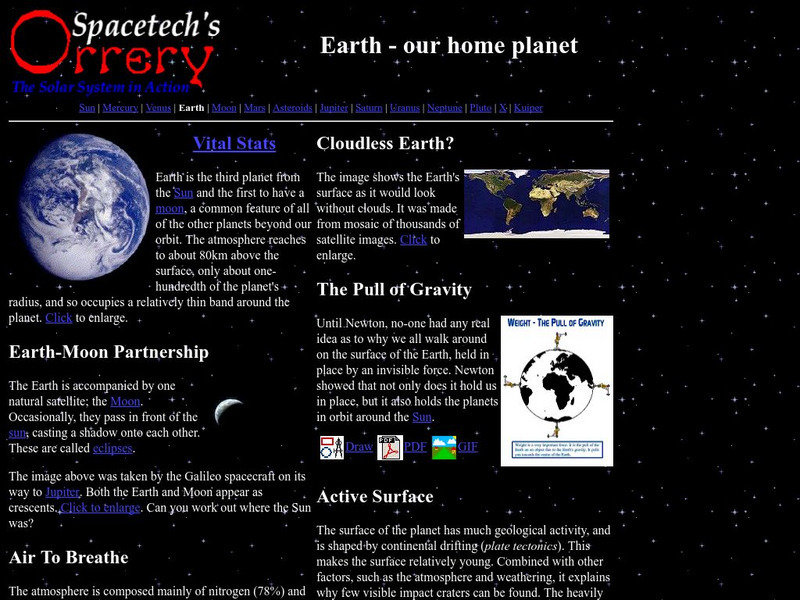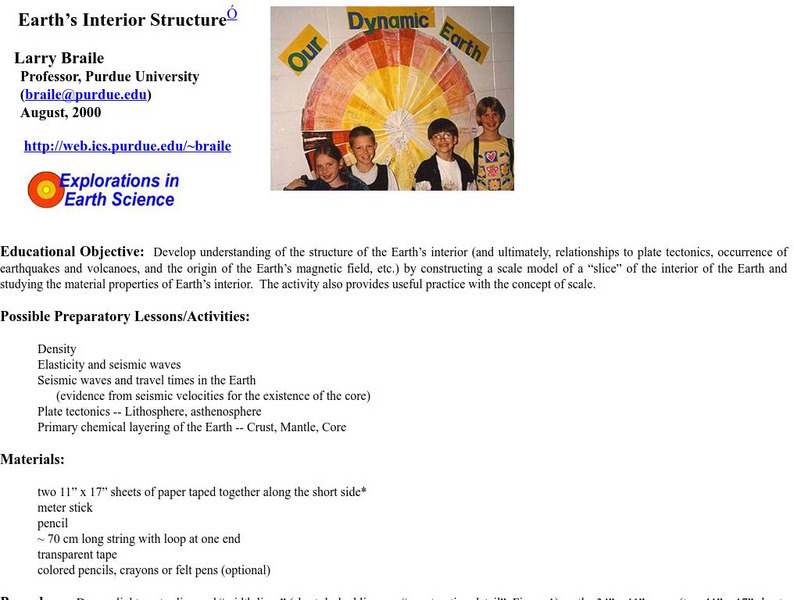Other
Nevada Seismological Laboratory: Plate Tectonics, the Cause of Earthquakes
This site contains an in-depth explanation of the causes of earthquakes as they relate to plate tectonics, and also has many nice and easy to read pictures, maps, and diagrams of plate tectonics and earthquakes.
Columbia University
Columbia University: Evidence for Internal Earth Structure and Composition
This resource describes how seismic waves have helped us to understand the composition of the Earth's interior. It discusses seismic discontinuities, including the Mohorovicic Discontinuity or Moho, and what we have learned about the...
Other
Bscs: Content Background Earth's Changing Surface
This is written to support and further your content learning about the dynamic nature of Earth's surface. The goal is for you to develop a conceptual understanding of landforms so that you will be able to more effectively teach...
American Museum of Natural History
American Museum of Natural History: O Logy: Stuff to Do: Edible Earth
Take a look at the layers that make up our Earth: inner core, outer core, mantle, and crust. Then have fun making a model of the Earth's interior that you can eat up.
University of Colorado
University of Colorado: Ph Et Interactive Simulations: Ph Et: Interactive Simulations: Plate Tectonics
Students studying plate tectonics will better understand its concepts with this virtual experiment that tests how plates move on the surface of the earth. Temperature, composition, and thickness of plates can be changed to create new...
Science Education Resource Center at Carleton College
Serc: Let's Build the Earth!: The Structure of the Earth's Crust and Interior
In this activity, learners will make observations then construct a "sample" model representation of the Earth's layers. They will compare and contrast the movement and material in each layer explaining the location and what it contains.
Wikimedia
Wikipedia: Hot Spring
This website from the encyclopedia Wikipedia contains a definition for what a hot spring is, and tells how they differ from a geyser. Links are also provided throughout for additional information on related subjects.
Missouri Botanical Garden
Missouri Botanical Garden: Ocean Animals: Mollusks
The Missouri Botanical Garden describes the characteristics and natural history of mollusks in text and color photography.
Other
Moorland School: Earth Science Zone: The Structure of the Earth
Take a look at the Earth from the inside out. This site shows the different layers of the earth with an explanation of the rocks and materials in each layer. Includes a quiz on the structure of Earth.
US Geological Survey
Usgs: Unanswered Questions
Discover how convection currents in the mantle are the driving force of continental drift. The reading also briefly addresses the scientists who laid the groundwork for this idea.
US Geological Survey
Usgs: Inside the Earth
This is a website to learn not only about the inner and outer core, but also about the crust and the mantle of the interior of the earth.
The Franklin Institute
The Franklin Institute: Land Mass Formation
The Franklin Institute has provided a demonstration that theorizes how the earth's crust was formed. This is a lesson plan that needs only a few materials.
PBS
Pbs: Scientific American Frontiers: Earth on the Move
The interactive resource examines the plate tectonics, magnetic reversals, and continental drift of the Earth. An animation of the Earth's continental drift over the last 750 million years is included.
CK-12 Foundation
Ck 12: Earth Science: Volcanoes at Plate Boundaries
[Free Registration/Login may be required to access all resource tools.] Volcanoes most often occur at plate boundaries.
American Geosciences Institute
American Geosciences Institute: Earth Science Week: Mapping Vertical Movements
Using flubber and plastic wrap, students study the Earth's crust and mantle.
CPALMS
Florida State University Cpalms: Florida Students: Journey to the Center of the Earth
Learn about the layers of the Earth.
TeachEngineering
Teach Engineering: Scale Model of the Earth
In this activity, students gain an understanding of the layers of the Earth by designing and building a clay model.
Other
Sea and Sky: Mollusks
This illustrated article describes several different types of reef mollusks ranging form snails and clams to the chambered nautilus.
CK-12 Foundation
Ck 12: Earth Science: Earth's Inner Layers
[Free Registration/Login may be required to access all resource tools.] Identifies and describes the two internal layers of Earth.
Read Works
Read Works: A Hole in the Planet
[Free Registration/Login Required] An informational text about the layers of the Earth and a place near the Canary Islands where there is a hole in the crust. A question sheet is available to help students build skills in reading...
University of Oregon
The Electronic Universe Project: Plate Boundaries/plate Tectonics
Visit this site to learn more about the different types of plate boundaries. Includes color pictures and easy-to-understand examples of how and why plates move the way they do.
Other
Spacetech's Orrery: Earth Our Home Planet
This site provides a very interesting overview of our home planet, Earth. Content includes a focus on the atmosphere, the pull of gravity, and the active surface.
US Geological Survey
Usgs: The Interior of the Earth
This site provides a detailed discussion of the Earth's interior. Facts about the crust, mantle, and core are given along with diagrams of each. Also presents a table that lists the thickness and types of rock found in each part of the...
Purdue University
Purdue University: Earth's Interior Structure
Purdue University provides a great lesson plan for learning about the Earth's interior structure. Focuses on the crust, mantle and core. Also includes examples and great charts that young scholars will enjoy looking at.


